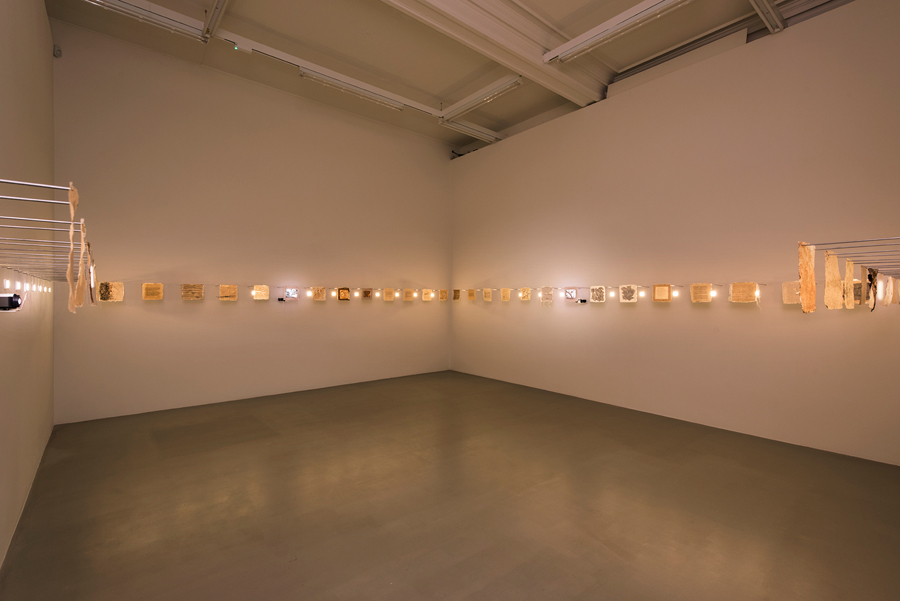Amar Kanwar
Marian Goodman, London, UK
Marian Goodman, London, UK

‘The most “obscure” inner experience can appear as a glimmer to others from the moment it finds its just form of construction, narration, transmission.’ So writes Georges Didi-Huberman in Survivance des lucioles (Survival of the fireflies, 2009), a literary reflection on the flicker of fireflies and precarious forms of resistance under fascism in contemporary Europe.
Artist and filmmaker Amar Kanwar has spent his career gathering luminous scraps of testimony to chronicle the resilience of India’s most vulnerable. He repeatedly cajoles and blandishes light to offer stories in which darkness never reigns supreme and human beings rarely, if ever, submit to obscurity. Darkness in his films invites both the possibility for revelation – as with Night of Prophecy (2002), in which a blind man falls asleep and begins to dream – and the brilliance of protest, as in The Lightning Testimonies (2007), which stitches together first-hand accounts of victims of wide-scale abduction and rape during the Indian partition in 1947 and powerful anti-rape demonstrations in Manipur in 2004.

With Such a Morning (2017), the centrepiece of his current exhibition at Marian Goodman, Kanwar departs significantly from his earlier documentary approach. An 85-minute single-channel film, which premiered at documenta 14, the piece is a fictional account of a solar eclipse and an ageing mathematics professor at the peak of his career. Retreating to an abandoned train carriage in the middle of a forest, the professor gradually screens out all light, day after day, and acquiesces to darkness. Mnemonic exercises help him perambulate his sparse refuge and navigate inner labyrinths of solitude as he serenely wills himself into blindness. The professor appears to renounce all expectations, desires and hopes for the future, surrendering to hopeless gloom. But in the limitless darkness he experiences a series of hallucinations and visionary epiphanies that guide him back to light and to writing poetry (a reference, perhaps, to the ‘photo-graphic’ nature of the filmmaking process). The evocative scenery that follows displays a reverence for nature – abstract patterns of vast ploughed fields and farmyards to close-ups of luscious wilderness and unpolluted forests – and the strange vision of an armed, lonely woman wrapped in a sari, who witnesses her home’s demolition and quietly resigns herself to her fate.
In two adjacent gallery spaces, a series of projectors throw flickering images onto sheets of handmade white paper that float free of the wall, evoking an old lantern-slide show. Collectively titled Letters (2017), the seven textured paper supports display sequences of black and white images and typed text: a crow perches on a tree branch; a leaf quivers, while another is twitched and tossed by the wind; a cloud frays at the edges. Ostensibly written by the professor, the freckled, porous papers are both tactile and auditory objects.

Such a Morning resonates with rich literary histories of blindness (José Saramago’s 1995 novel of that name – an allegory about mass loss of sight, the perversion of reason, madness and concomitant state violence – comes to mind) as well as the mystical light experienced by enraptured Sufis and the enlightenment of the Buddha. The allegorical focus of Kanwar’s installation may well be the murky side of contemporary Indian politics: suppression of dissent, censorship of the press, murder of journalists and the re-writing of history books under the current Bharatiya Janata Party government (whose campaign slogan was ‘India Shining’). However, the film’s relation to these very real problems is little more than oblique. Kanwar’s longstanding investment is in the genres of the archival, the documentary and the everyday; by comparison, Such a Morning, with its formalized visual vocabulary and sumptuous studio production values, is simultaneously his flashiest work and his most obscure.
Main image: Amar Kanwar, Such a Morning (detail), 2017, digital video still. Courtesy: the artist and Marian Goodman Gallery, New York, Paris and London
























